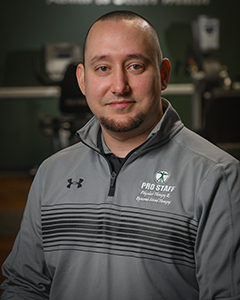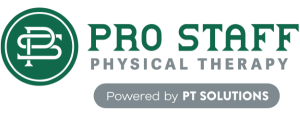Rehabilitation for Achilles Tendonitis: Strengthening and Stretching Protocols
Achilles tendonitis is a common but debilitating injury that can sideline athletes and active individuals with intense heel and calf pain. At Pro Staff Physical Therapy, we implement a structured, phased rehabilitation protocol that focuses on alleviating symptoms, restoring functionality, and preventing recurrence. Each recovery phase introduces specific exercises designed to gradually rehabilitate the Achilles tendon without over-stressing it.

What is Achilles Tendonitis?
The Achilles tendon is the largest in the body and is vital for walking, running, and jumping. Achilles tendonitis results from excessive stress on the tendon, leading to irritation, inflammation, and pain just above the heel. Factors contributing to this condition include:
- Overtraining
- Insufficient calf muscle flexibility
- Poor running techniques
- Inappropriate footwear
- Naturally flat foot posture
Symptoms typically include pain and stiffness along the Achilles tendon in the morning, pain along the tendon or back of the heel that worsens with activity, severe pain the day after exercising, thickening of the tendon, and bone spurs.
The Rehabilitation Process
Rehabilitation for Achilles tendonitis at Pro Staff Physical Therapy involves a comprehensive approach that includes various strategies to reduce pain, promote healing, restore mobility, and prevent future injuries. It begins with a thorough assessment of the patient’s condition, evaluating the Achilles tendon for signs of tenderness and swelling and evaluating the range of motion, strength, and functional limitations. This initial assessment helps craft a personalized treatment plan structured in progressive phases to gradually enhance the tendon’s strength and flexibility without over-stressing the injured tissue.
Phase 1: Pain and Inflammation Management
The first priority is to address pain and reduce inflammation. Common techniques include:
- RICE: Rest, Ice, Compression, Elevation
- Manual Therapy: Gentle massage and mobilizations help improve circulation and alleviate tension in the calf muscles and surrounding tissues.
- Modalities: Ultrasound, electrical stimulation, and laser therapy can reduce pain and swelling.
Phase 2: Mobility and Flexibility Enhancement
In the second phase of rehabilitation, the focus shifts toward restoring mobility. This stage involves specific stretching and range-of-motion exercises aimed at gently elongating the Achilles tendon and calf muscles and enhancing joint flexibility and mobility of the tendon.
Stretching Exercises
- Towel Stretch: Sit on the floor with your legs straight out in front of you. Loop a towel around the ball of your foot and gently pull the towel towards you while keeping your knee straight. Hold for 15-30 seconds.
- Wall Stretch: Face a wall and place your hands on it at about eye level. Place one foot behind you, ensuring it is flat on the ground. Bend the front knee while keeping the back leg straight, and push your hips forward until you feel a stretch in the back leg’s calf. Hold for 15-30 seconds.
- Downward Dog: Start in a high plank position and lift your hips up and back, pressing your heels towards the ground. This will stretch your calves, hamstrings, and Achilles tendon. Hold for 20-30 seconds.
Mobility Exercises
- Ankle Circles: Sit or lie down and extend your leg. Slowly rotate your foot in a circular motion, moving only your ankle. Perform 10 circles in each direction.
- Heel Slides: Lie on your back with your legs extended. Slowly bend one knee and slide your heel towards your buttocks, keeping your heel on the ground. Slide back to the starting position. Repeat 10-15 times.
- Toe Taps: While seated with your feet flat on the floor, lift the toes of one foot off the ground while keeping the heel down, then alternate with the other foot. Perform this movement rhythmically 10-15 times per foot.
Phase 3: Strengthening
Strengthening the muscles around the Achilles tendon is vital to supporting and protecting the tendon and encouraging recovery. Combining isometric, eccentric, and concentric exercises ensures a well-rounded strengthening regimen that enhances recovery and prevents future injuries.
Isometric Exercises
Isometric exercises involve contracting the muscles without any visible joint movement and are useful early in rehabilitation when movement might still cause pain. Try these exercises, holding each for 10-15 seconds and repeating the process 3-5 times.
- Isometric Wall Push: Stand facing a wall with your toes a few inches away. Flex your foot upward so your toes press against the wall while your heel remains on the floor, then push against the wall with your toes, contracting the calf muscles without moving your foot.
- Seated Isometric Calf Press: Sit on a chair with your feet flat on the floor and place a weight (like a book) on your knees, just above where your knee bends. Attempt to raise your heels (to perform a calf raise), but resist the movement with the weight, holding the contraction.
- Towel Calf Hold: Sit with your legs extended and a rolled-up towel looped around the ball of your foot. Pull the towel towards you while resisting with your foot by pushing it away.
Eccentric Exercises
Eccentric exercises involve lengthening the muscle under tension and are excellent for strengthening and improving tendon resilience. For these exercises, try to perform 3 sets of 10-15 repetitions:
- Eccentric Heel Drops: Stand on the edge of a step with both feet and slowly lower your heels below the step level using the injured leg while the other leg assists. Lift back up with both legs, then repeat the lowering with the injured leg.
- Single-Leg Eccentric Heel Drops: These are similar to the standard heel drops but only performed with the injured leg to increase the load. Only perform this exercise when double-leg drops are manageable.
- Eccentric Sliding Heel Drop: Place a towel under the foot on a slippery floor (like hardwood or tile) and slide the foot forward slowly, letting the heel drop and the leg straighten, then return to the start position.
Concentric Exercises
Concentric exercises involve shortening the muscles and are used to build muscle bulk and power.
- Standing Calf Raises: Stand upright and lift your heels off the ground, rising onto your toes. Hold briefly at the top, then slowly lower back down. Perform 3 sets of 10-15 repetitions.
- Single-Leg Calf Raises: Lift the heel as high as possible, hold, and then slowly lower. Do 3 sets of 10 repetitions on each leg.
- Jumping Rope: Start with gentle hops, and as your tendon strengthens, incorporate higher and faster jumps. Begin with short intervals, such as 30 seconds, and gradually increase as tolerated.
Phase 4: Return to Sport or Activity
As rehabilitation progresses, the goal is to prepare the Achilles tendon to handle the usual loads and stresses associated with specific movements without pain or restrictions to promote a return to daily activities. This phase includes:
- Neuromuscular Control: Exercises such as using a wobble board or performing single-leg stands to enhance proprioception and balance help stabilize the lower leg muscles.
- Functional Training: Gradually introducing more dynamic exercises and drills that mimic day-to-day activities or sport-specific movements prepares the tendon for usual loads and ensures the muscles can adequately support the tendon during various activities.
- Sport-Specific Drills: For athletes, this includes incorporating running, jumping, or cutting maneuvers in controlled environments to simulate the demands of their sport.
- Conditioning: Gradually increasing the intensity and volume of exercises to strengthen the tendon and surrounding muscles ensures the tendon’s resilience and functionality during high-stress situations.
Continuous Education and Monitoring
Throughout the Pro Staff Physical Therapy rehabilitation process, patients receive comprehensive education and are closely monitored, allowing for adjustments based on their recovery progress. These measures help to prevent future injuries by maintaining tendon flexibility and avoiding overuse. This holistic approach alleviates symptoms and empowers patients with the knowledge to maintain tendon health and prevent re-injury long-term.
Overcome Achilles Tendonitis with Pro Staff
Effective rehabilitation from Achilles tendonitis requires a carefully structured approach that balances rest, strengthening, and stretching protocols. At Pro Staff Physical Therapy, we aim to guide patients through each recovery phase with personalized care, ensuring they return to peak physical form safely and effectively. If you’re struggling with Achilles tendonitis, our team is here to support your journey back to health. Find a Pro Staff location near you to get started today!
Pro Staff Institute, LLC, has a network of outpatient physical rehabilitation centers in New Jersey. Pro Staff was founded in 2010 by Frank Pavlisko and Michael Maffucci. Through Frank’s 25 plus years experience in Physical Therapy and Michael’s experience in Management Services, our goal is to exceed customer expectations by providing the highest quality of service in a fun, family, friendly, and encouraging environment.
PRO STAFF LOCATIONS
OFFERING CERTIFIED
HAND THERAPY
Managing Diabetes: The Role of Physical Therapy
Managing Diabetes: The Role of Physical Therapy As of 2024, approximately 38.4 million Americans, or 11.6% of the U.S. population, have diabetes. Of these, 29.7 million cases are diagnosed, while an estimated 8.7 [...]
Staying Active and Injury-Free During Summer Activities
Staying Active and Injury-Free During Summer Activities Summer is a fantastic time to engage in outdoor sports and physical activities. Whether playing soccer, tennis, cycling, or jogging in the park, staying active is [...]
The Importance of Posture: How Proper Alignment Can Prevent Pain and Injury
The Importance of Posture: How Proper Alignment Can Prevent Pain and Injury In today's fast-paced world, where many hours are spent over desks, smartphones, and computers, posture is often neglected. Poor posture can [...]




